Dominique Luchart's Blog, page 556
July 27, 2021
EA unveils ‘Dead Space’ remake plans for next-gen game consoles, ,

Electronic Arts has unveiled that game developer Motive is going to remake the hit space-horror game “Dead Space.”
The new “Dead Space.” announced during EA’s Play Live 2021 event on July 22, is set to be more than just a standard remaster as the game will feature completely rebuilt assets and all-new technology to harness the power of next-gen game consoles. (The “Dead Space” remake is being developed exclusively for Playstation 5, Xbox Series X/S and PC.)
The original “Dead Space”, which was released in 2008 for Playstation 3, Xbox 360 and Microsoft Windows, is still available to play and has been critically acclaimed the world over. Two further games were released in the main series, “Dead Space 2” was very well received upon its release in 2011. The third instalment was released in 2013 to more mixed reviews.
Related: The best space board games of 2021
[image error]
Dead Space for PC: $3.59 at CDKeys
Launch into the original that started it all with the space horror game “Dead Space” for PC before its remake launches from Electronic Arts and Motive.View Deal
The horror survival game, which is set onboard a spaceship overrun by monsters, will be remade using Frostbite’s powerful engine to create an immersive and terrifying playing experience whilst also preserving the legacy of the original release.
The game will be released worldwide, but both EA and Motive are yet to reveal the official release date for the game.
“The ‘Dead Space‘ franchise made a huge impact on the survival horror genre when it was released 12 years ago, and I came to Motive as a fan first to specifically work on this game,” said Phillippe Ducharme, senior producer of “Dead Space” for Motive, in a statement.
“We have a passionate team at Motive who are approaching this remake as a love letter to the franchise,” Ducharme added. “Going back to the original and having the opportunity to do so on next-gen consoles excited everyone on the team”
Today’s best Electronic Arts Dead Space (PS3) deals
Dead Space 3 (PS3)
Amazon
$19.99
Dead Space 2 (PS3)
Walmart
$22.99
Dead Space 3 (PS3) (UK…
Amazon
Dead Space 2 (PS3)
Amazon
$71.68
We check over 250 million products every day for the best prices

Follow Alexander Cox on Twitter @Coxy_97Official. Follow us on Twitter @Spacedotcom and on Facebook.
Join our Space Forums to keep talking space on the latest missions, night sky and more! And if you have a news tip, correction or comment, let us know at: community@space.com.
The post EA unveils ‘Dead Space’ remake plans for next-gen game consoles, , appeared first on NEWDAWN Blog.
We found a new type of stellar explosion that could explain a 13-billion-year-old mystery of the Milky Way’s elements, ,
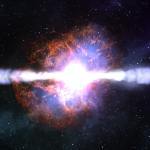
This article was originally published at The Conversation. The publication contributed the article to Space.com’s Expert Voices: Op-Ed & Insights .
David Yong , Academic, Research School of Astronomy and Astrophysics, Australian National University
Gary Da Costa , Emeritus Professor of Astronomy, Australian National University
Until recently it was thought neutron-star mergers were the only way heavy elements (heavier than zinc) could be produced. These mergers involve the mashup of the remnants of two massive stars in a binary system.
But we know heavy elements were first produced not long after the Big Bang, when the universe was really young. Back then, not enough time had passed for neutron star mergers to have even occurred. Thus, another source was needed to explain the presence of early heavy elements in the Milky Way.
The discovery of an ancient star SMSS J2003-1142 in the Milky Way’s halo — which is the roughly spherical region that surrounds the galaxy — is providing the first evidence for another source for heavy elements, including uranium and possibly gold.
[image error]
Around our galaxy, the Milky Way, there is a ‘halo’ made up of hot gases which is continually being supplied with material ejected by birthing or dying stars. Only 1% of stars in the galaxy are found in the halo. (Image credit: NASA JPL)In our research published in Nature, we show the heavy elements detected in SMSS J2003-1142 were likely produced, not by a neutron star merger, but through the collapse and explosion of a rapidly spinning star with a strong magnetic field and a mass about 25 times that of the sun.
We call this explosion event a “magnetorotational hypernova.”
Related: Rare ‘hypernova’ explosion detected on fringes of the Milky Way for the first time
Stellar alchemyIt was recently confirmed that neutron-star mergers are indeed one source of the heavy elements in our galaxy. As the name suggests, this is when two neutron stars in a binary system merge together in an energetic event called a “kilonova.” This process produces heavy elements.
[image error]
Binary star systems have two stars orbiting around a common centre of mass. A neutron star merger is a type of stellar collision that happens between two neutron stars in a binary system. This process can produce heavy elements. (Image credit: NASA)However, existing models of the chemical evolution of our galaxy indicate that neutron star mergers alone could not have produced the specific patterns of elements we see in multiple ancient stars, including SMSS J2003-1142.
Read more: Signals from a spectacular neutron star merger that made gravitational waves are slowly fading away
A relic from the early universeSMSS J2003-1142 was first observed in 2016 from Australia, and then again in September 2019 using a telescope at the European Southern Observatory in Chile.
From these observations, we studied the star’s chemical composition. Our analysis revealed an iron content roughly 3,000 times lower than the sun‘s. In other words, SMSS J2003-1142 is chemically primitive.
The elements we observed in it were likely produced by a single parent star, just after the Big Bang.
The chemical composition of SMSS J2003-1142 can reveal the nature and properties of its parent star. Particularly important are its unusually high amounts of nitrogen, zinc and heavy elements including europium and uranium.
The high nitrogen levels in SMSS J2003-1142 indicate the parent star had rapid rotation, while high zinc levels indicate the energy of the explosion was about ten times that of a “normal” supernova — which means it would have been a hypernova. Also, large amounts of uranium would have required the presence of lots of neutrons.
The heavy elements we can observe in SMSS J2003-1142 today are all evidence that this star was produced as a result of an early magnetorotational hypernova explosion.
And our work has therefore provided the first evidence that magnetorotational hypernova events are a source of heavy elements in our galaxy (alongside neutron-star mergers).
But how do we know it wasn’t just neutron star mergers that led to the particular elements we find in SMSS J2003-1142? There’s a few reasons for this.
In our hypothesis, a single parent star would have made all the elements observed in SMSS J2003-1142. On the other hand, it would have taken much, much longer for the same elements to have been made only through neutron-star mergers. But this time wouldn’t have even existed this early in the galaxy’s formation when these elements were made.
Also, neutron star mergers make only heavy elements, so additional sources such as regular supernova would had to have occurred to explain other heavy elements, such as calcium, observed in SMSS J2003-1142. This scenario, while possible, is more complicated and therefore less likely.
The magnetorotational hypernovae model not only provides a better fit to the data, it can also explain the composition of SMSS J2003-1142 through a single event. It could be neutron-star mergers, together with magnetorotational supernovae, could in unison explain how all the heavy elements in the Milky Way were created.
Read more: The race to find even more new elements to add to the periodic table
This article is republished from The Conversation under a Creative Commons license. Read the original article.
Follow all of the Expert Voices issues and debates — and become part of the discussion — on Facebook and Twitter. The views expressed are those of the author and do not necessarily reflect the views of the publisher.
The post We found a new type of stellar explosion that could explain a 13-billion-year-old mystery of the Milky Way’s elements, , appeared first on NEWDAWN Blog.
8 ways life would get weird on a flat Earth, ,
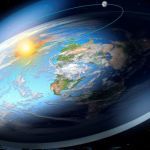
Earth — the blue marble — is our spherical home. But what if Earth were flat? After all, some people truly believe in this retrograde idea. How would everyday life function? Would it function at all? We explore how much of an oddball, or “oddslice” Earth would be if it were flat and whether there are any advantages to living on a strange disk with the sun and moon rotating overhead like a cosmic carousel.
1. Say goodbye to gravity (at least as we know it)[image error]
Gravitropism is the gravitational process that directs a plant’s roots to grow downward and its shoot upward. If gravity were altered to be orientated toward the North Pole, we could see plants acting strangely. (Image credit: Tim Graham via Getty)On spherical Earth, gravity tugs equally on objects no matter where in the world they are. For Earth to take the shape of a flat disk in the first place, gravity — as we know it — must be having no effect. If it did, it would soon pull the planet back into a spheroid.
Maybe a flat-Earth would have no gravity at all, as a solid disk-like Earth would not be possible under actual gravity conditions, according to calculations in the 1850s by mathematician and physicist James Clerk Maxwell.
Or perhaps on a flat-Earth, gravity would pull everything to the center of the disk — the North Pole. In that scenario, the farther away you are from the North Pole the more horizontal the gravitational tug toward the central point of the disk, according to James Davis, a geophysicist at Columbia University’s Lamont-Doherty Earth Observatory. This would wreak havoc worldwide, but at least the world long jump record would be easily beaten (as long as you orientated yourself northward before taking off that is).
2. It would certainly clear the atmosphere[image error]
View of Earth’s atmosphere from the International Space Station. (Image credit: ESA/NASA/Tim Peake)With no gravity, flat-Earth would no longer be able to hold onto the layer of gases called the atmosphere. The force of gravity is what holds this veil around our planet. And without this protective blanket, Earth’s skies would turn black because light emitted from the sun would no longer scatter as it enters Earth’s atmosphere and paint the skies the familiar blue we see today. The loss of atmospheric pressure would expose plants and animals to the vacuum of space, leading to asphyxiation in seconds, Luis Villazon, a zoologist and educator, wrote in BBC Science Focus.
Without an atmosphere surrounding the planet, water would initially boil away in the vacuum of space. That’s because water boils when its vapor pressure equals that of the atmosphere, so lower atmospheric pressure means lower boiling point. Without an atmosphere to help warm the planet, the surface temperature would also plummet causing any remaining water to quickly freeze. But it isn’t all bad news, as deep-ocean organisms such as chemosynthetic bacteria that don’t require oxygen might just survive. After all, such bacteria have endured long trips to space and lived to tell the tale.
3. Cloudy with a chance of sideways rain[image error]
If flat-Earth gravity pulls water towards the North Pole, bulging oceans would collect at the center of the planet. (Image credit: Photo by Joel Sharpe via Getty)If gravity pulled toward the center of the planetary disk, which in this case is the North Pole, precipitation would also gravitate toward that spot. This is because precipitation falls to Earth due to gravity and will therefore fall toward the point of strongest gravitational pull.
Only at the center of the disk would weather behave as we know it on Earth — falling straight down. The farther out you travel, the more horizontal the precipitation would be. Water in rivers and seas would also flow toward the North Pole, meaning vast bulging oceans would collect at the center of the planet, leaving practically no water at the edges, according to Columbia University’s Lamont-Doherty Earth Observatory.
4. We would all get lost[image error]
It’s hard to imagine a world without GPS, suffice to say we’d be lost! (Image credit: Blend Images – Diego Cervo via Getty)It is likely that satellites would not exist if the Earth were flat, as they would have trouble orbiting a flat plane. “There are a number of satellite missions that society depends on that just wouldn’t work,” James Davis, a geophysicist at Columbia University’s Lamont-Doherty Earth Observatory, said in a statement “I cannot think of how GPS would work on a flat Earth,” said Davis.
We depend on Global Navigation Satellite Systems (GNSS) for anything from the GPS services on your phone, to travel information and supermarket just-in-time stock management to make sure produce arrives as fresh and as quickly as possible. And critically, emergency services use GPS to locate callers from their phone signal, the satellite communications could possibly save your life.
It’s hard to imagine a world without GPS, suffice to say we’d be lost. On the upside, at least on flat-Earth humans would have the horizontal rain to point us in the right — well, north — direction.
5. Some journeys would take forever[image error]
(Image credit: Rebel Design Project / Alamy)Longer travel times can be expected, not just due to no-GPS navigation issues, but also because of the distances we would need to travel. According to flat-Earth belief, the Arctic lies in the center of the planet and Antarctica forms a giant ice wall around the edge; this wall conveniently stops people from literally falling off the face of Earth. But if you are unable to fly around the globe and instead are forced to fly across it, then travel times would increase significantly. For example, to fly from Australia (which is one side of the flat-Earth map) to a McMurdo station in Antarctica (on the other side of the flat-Earth map), you would need to fly across the entire Arctic, as well as North and South America. You can also forget about trips across Antarctica (though this has been achieved many times on a spherical Earth), as that pesky ice wall would prevent such travel.
6. No more auroras and we’d all be roasted[image error]
Aurora photographed by NASA astronaut Jack Fischer aboard the International Space Station. (Image credit: NASA)On spherical Earth, the swirling molten metal surrounding our iron core generates electric currents that in turn create our protective magnetic field which curves around the planet from one pole to the other, according to NASA. But on a flat Earth, without a solid core generating a magnetic field that protective layer — the magnetosphere — would cease to exist. And so would auroras. Also called the Northern Lights, these sky shows form when charged particles from the sun bump into oxygen and nitrogen molecules in the magnetosphere, where they release energy in the form of incredible aurora light shows.
Even so, the absence of auroras would be the least of our worries, as Earth would no longer be protected from solar winds. Earth and everything on its surface would be bombarded with harmful solar radiation, leaving a barren world akin to our neighbor Mars, according to NASA.
[image error]
On flat-Earth we would all have the same view of the night sky. (Image credit: Alan Dyer/VWPics/Universal Images Group via Getty Images))A flat-Earth would not be split into hemispheres like it is on our current orb: So night and day wouldn’t be flip-flopped depending on whether you’re in the Northern or Southern hemisphere. Also, the night sky no matter where you stood on the planetary disk. It sure would make stargazing easier, as you wouldn’t have to travel to a different hemisphere to tick off all the targets on your astronomy bucket list. But isn’t that part of the fun?
If we all shared one view of just one portion of the night sky, we’d miss out on the many ground-based discoveries that have been made due to our access to a 360-degree view of the observable universe from Earth. We’d have to solely rely on space-based telescopes to widen our view of the cosmos.
8. Hurricanes would be a thing of the past[image error]
Hurricane Florence photographed from the International Space Station. (Image credit: NASA)Every year, hurricanes (also called typhoons and cyclones depending on the location where they form) cause unprecedented damage. In 2017, Hurricane Harvey alone caused $125 billion (GBP90 billion) worth of damage to the U.S., according to NOAA.
The devastating rotating nature of these tropical storms stems from Earth’s coriolis effect, which causes storms in the Northern Hemisphere to rotate clockwise and those in the Southern Hemisphere to rotate counterclockwise. However, on stationary, flat-Earth, no coriolis effect would be generated. No coriolis means no hurricanes, typhoons and cyclones. This is also why we don’t see these types of storms between five degrees north and south of the equator, as the magnitude of the coriolis effect is zero at the equator, according to NASA.
Additional resources:
90 Years of Our Changing Views of Earth
Why some people believe the Earth is flat
Why are things in space the shape that they are?
The post 8 ways life would get weird on a flat Earth, , appeared first on NEWDAWN Blog.
Vigilante app Citizen is paying users to livestream crime scenes and emergencies, James Vincent

Citizen, an app dedicated to blasting people with notifications about emergencies and crime scenes in their area, has been paying users to film its content.
The company has been recruiting “field team members” via online job listings, offering applicants $200 to $250 a day if they can track down and livestream events in their local area. These events could range from “child reported missing, to house fire, to anything else,” says the listing, with workers expected to interview witnesses and police officials.
As per the listing: “You will need to be very quick on your feet, not only in terms of going live during moments that provide value to its users and support the app’s mission, but being able to locate and incorporate interviews on the fly that contribute to the live stream.”
The job listings were first spotted by the New York Post, but reports of paid Citizen streamers have been circulating for a while. The Daily Dot reported in June that a man named Landon was frequently seen livestreaming from crime scenes in Los Angeles. Citizen confirmed to the publication that Landon was a member of its paid field team.
As a spokesperson for the company told the Post: “Citizen has teams in place in some of the cities where the app is available to demonstrate how the platform works, and to model responsible broadcasting practices in situations when events are unfolding in real time.”
Citizen also told Gizmodo that it has 12 such “field team members” in total. It’s not clear where they are located, but the job-listings only mention work in Los Angeles (10 hour shifts for $250 a day) and in New York City (8 hour shifts for $200 a day).
Citizen, which originally launched in 2016 as Vigilante before being kicked off the iOS App Store, describes itself as a “personal safety network.” It generates location-based alerts for users by scanning police communications and compiling user reports. It tells users to “never approach a crime scene, interfere with an incident, or get in the way of police.”
The company has been repeatedly criticized for encouraging mob justice. In May this year, Citizen’s own CEO authorized the offer of a $30,000 bounty to users if they could find a man accused of starting a wildfire. The man’s name and image were shared on an official livestream on the app, with hosts encouraging watchers to “get out there and bring this guy to justice” and “hunt this guy down.” But the individual was wrongly accused and later cleared by the police, who said Citizen’s actions had been potentially “disastrous.”
The company seems determined to be more than a passive bystander or information source. As first reported by Motherboard in May, Citizen has been testing its own private security force, deploying Citizen-branded patrol cars who would respond to user requests.
The post Vigilante app Citizen is paying users to livestream crime scenes and emergencies, James Vincent appeared first on NEWDAWN Blog.
New FAA rules change who qualifies for commercial astronaut wings, ,
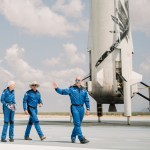
The Federal Aviation Administration (FAA) has changed their qualifications for commercial astronaut wings, and Blue Origin’s first flight crew might no longer be eligible. That, however, doesn’t change whether or not they are astronauts.
Recently, two crews from the space tourism companies Virgin Galactic and Blue Origin launched their first fully crewed suborbital test flights on SpaceShipTwo and New Shepard vehicles, respectively, each reaching different boundaries of space.
Virgin Galactic’s space plane surpassed a 50-mile (80 kilometers) altitude and Blue Origin’s capsule reached 62 miles (100 km) above Earth’s surface, a boundary known as the Karman line. However, while both missions passed these thresholds, it is possible that not everyone on these flights will earn official commercial astronaut wings with the FAA.
Related: How to become an astronaut
On July 20, the same day that Blue Origin launched its crewed suborbital mission using the New Shepard vehicle, the FAA announced a major change to its Commercial Space Astronaut Wings Program, which launched in 2004. Previously, to be eligible to earn the wings, commercial launch crew members had to both meet specific requirements for flight crew qualifications and training and fly above a 50-mile (80 km) altitude on an FAA-licensed or permitted vehicle.
Now, effective July 20, the FAA has added new criteria to its short list of qualifications.
With the new change, those who fly on commercial space missions must also have “demonstrated activities during flight that were essential to public safety, or contributed to human space flight safety,” according to the FAA.
Related: Jeff Bezos launches into space on Blue Origin’s 1st astronaut flight
[image error]
The Blue Origin “astronaut pin” that all crew members receive after flight, next to the patch for the first New Shepard mission. (Image credit: Blue Origin)In addition to this change to the qualifications, the FAA also added that it can award “honorary” commercial space astronaut wings “to individuals who demonstrated extraordinary contribution or beneficial service to the commercial human spaceflight industry.” The FAA adds that “these individuals receiving an honorary award may not be required to satisfy all eligibility requirements. The award can be granted posthumously.”
The FAA also states in its policy that “in order to maintain the prestige of Commercial Space Astronaut Wings, the FAA may further refine the eligibility requirements at any time as it deems appropriate.”
With these changes in place, people have wondered whether these new commercial flyers will receive wings. Currently, it appears as though the Virgin Galactic crew, having flown the Unity 22 test flight and meeting flight crew qualifications, may be eligible for these commercial wings. However, it is not yet clear whether or not the Blue Origin crew, which included founder Jeff Bezos and famed aviator Wally Funk, will earn these wings.
Related: ‘Welcome to the dawn of a new space age,’ Branson says
Regardless of whether these crewmembers will receive the FAA’s “official” commercial space astronaut wings, the space flyers may still be awarded honorary wings. It is not yet clear if the honorary FAA wings are different in appearance or carry any additional meaning.
Additionally, whether or not someone has FAA wings does not determine whether or not they are considered astronauts.
According to the dictionary Merriam-Webster, an astronaut is defined as “a person who travels beyond the earth’s atmosphere,” or “a trainee for spaceflight.”
In the U.S., the FAA and the U.S. military awards astronaut wings to those who fly above 50 miles (80 km). However, NASA astronauts don’t receive wings to qualify their astronaut status. Since the dawn of human spaceflight, “wings” have not been a necessary requirement to achieve astronaut status.
Email Chelsea Gohd at cgohd@space.com or follow her on Twitter @chelsea_gohd. Follow us on Twitter @Spacedotcom and on Facebook.
The post New FAA rules change who qualifies for commercial astronaut wings, , appeared first on NEWDAWN Blog.
Android 13’s dessert codename might be Tiramisu, Jon Porter

Tiramisu is a deliciously simple Italian dessert made from coffee-infused ladyfingers and whipped mascarpone and/or cream, but it could also be the internal codename for the next version of Android. That’s if a new commit is to be believed. “Rename T to Tiramisu,” the note reads, in what XDA notes is the first public mention of a dessert-based codename for Android 13, expected to release next year.
Up until Android 10, each version of Google’s mobile OS had both a version number and a dessert-based name, which progressed alphabetically with each new release. Android 4 was Ice Cream Sandwich, 4.1 was Jelly Bean, 4.4 was KitKat, and so on. But Google , when it was in the unenviable position of having to come up with a dessert starting with the letter “Q.” Since then, the public names of each Android release have only been numbers.
Internally, however, Google has continued to use dessert names for each new Android version. Android 10 was internally known as “Quince Tart,” Android 11 was “,” and Android 12, which is currently in beta ahead of its release this fall, is apparently “”
I’m not a massive fan of tiramisu the dessert, but Tiramisu the Android name? That’s something I can get behind. “Turkish Delight” is a little too long for a name, and “Twix” would just feel like a rebrand of KitKat. That said, I would have also accepted “Toffee,” “Treacle Tart,” “Trifle,” “Truffles,” or… wow, is anyone else getting uncomfortably hungry?
The post appeared first on NEWDAWN Blog.
Realme is the first to bring magnetic wireless charging to Android, Sam Byford
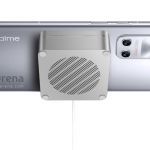
Realme has teased a new device called the Realme Flash, which it claims will be the first Android phone to use magnetic wireless charging. While it looks to be the company’s take on Apple’s MagSafe system for the iPhone 12 range, Realme is taking a somewhat different approach with the initial hardware.
As reported by GSMArena and confirmed by The Verge, Realme will release a magnetic wireless charger called MagDart that’s far bulkier than Apple’s MagSafe puck. Charging speeds are said to exceed the 15W that MagSafe reaches, making it the fastest magnetic charger in the world, but the tradeoff is that the device is much thicker and requires an active cooling fan.
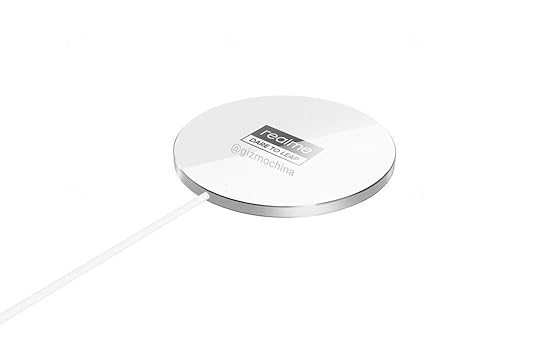 An alleged Realme MagDart charger.Gizmochina
An alleged Realme MagDart charger.GizmochinaRealme is also working on a slimmer MagDart charger that looks much more like Apple’s MagSafe puck, Gizmochina reported last week.
According to GSMArena, the Realme Flash will be a flagship phone with a Snapdragon 888 processor. A leaked render of the phone shows that at least one model will have 256GB of storage and 12GB of RAM. Sources with knowledge of Realme’s plans tell The Verge that it’s likely to be announced next week.
Realme has never included wireless charging in any of its phones before, though it does sell Qi wireless chargers that work with accessories like earbuds. It took many years for sister brand Oppo to use the technology, after focusing on the proprietary VOOC wired fast-charge system that was also adopted as Dash Charge in several OnePlus phones.
The post Realme is the first to bring magnetic wireless charging to Android, Sam Byford appeared first on NEWDAWN Blog.
Spotify adds What’s New feed for all the music and podcasts you follow, Jon Porter
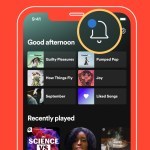
What’s New is a new section in the Spotify app that collects together new music and content from musicians and podcasts you follow on the platform. The feed, which is rolling out globally over the coming weeks on iOS and Android, will be accessible via a new bell icon on the top right of the app’s home screen. A blue dot will show when there’s new content in the feed, and artists and podcasts can be added by tapping the “Follow” button on their respective pages.
“What’s New makes it easier than ever to catch all the latest songs and episodes from the creators you follow,” Spotify’s announcement says. “Plus, it’s even updated in real time, so you know you’ll get to listen to new content just as it’s released.”
[image error] Spotify’s What’s New section of the app.GIF: Spotify
Spotify’s What’s New section of the app.GIF: SpotifyAlthough the new feature works with music releases, the feed is likely to be most helpful for keeping up to date with podcasts. Despite Spotify’s big push into podcasts, its history as a music-focused service has meant that its apps aren’t particularly well suited for listening to episodic content. Dedicated podcasting apps, meanwhile, are designed around chronological feeds, making it easy to see when new episodes are available. Hopefully, What’s New will bring some of these benefits to Spotify.
The post Spotify adds What’s New feed for all the music and podcasts you follow, Jon Porter appeared first on NEWDAWN Blog.
July 26, 2021
LG’s new true wireless earbuds have a privacy-conscious ‘Whispering Mode’, Jon Porter

LG’s new Tone Free FP true wireless earbuds feature a “Whispering Mode” where you can hold the right earbud next to your mouth during calls to use it as a dedicated microphone. It’s a neat privacy-conscious feature for those moments when you don’t want to have to speak loudly enough for the sound to be picked up by the earbuds in your ears.
There are three new earbuds in the lineup — the FP5, FP8, and FP9 — and they share a lot of the same specs. All are noise cancelling, have three microphones per earbud, and have an IPX4 water resistance rating to withstand light splashes. Their earbud stems are 4.4mm shorter than LG’s previous models, and they have improved drivers and diaphragms which LG claims offers more bass without impacting clarity. Headphone Spatial Processing and 3D Sound Stage provides an audioexperience that surrounds the listener.
 The FP9 earbuds, whose case doubles as a wireless transmitter.Image: LG
The FP9 earbuds, whose case doubles as a wireless transmitter.Image: LGHowever, there are individual features exclusive to one or two of the headphones. The most interesting of these is reserved for the FP9 earbuds, whose case can double as a wireless transmitter to allow the earbuds to be used with non-Bluetooth devices. Using a USB-C to aux cable, the case can be plugged into anything from a games console to an in-flight entertainment system, removing the need to use a separate Bluetooth adapter. It’s similar to what we saw from Bowers and Wilkins’ PI7 earbuds earlier this year.
The FP8 and FP9 earbuds feature LG’s bacteria-killing UV tech, which the company says can kill 99.9 percent of the bacteria on the earbuds’ speaker mesh in five minutes to reduce the chance of inner ear infections. These two earbuds also have improved battery life compared to the FP5, and can run for 10 hours on a charge, or up to 24 hours when used with their charging case (the FP5 is rated for 8 and 22 hours, respectively). Only the FP8 model supports wireless charging.
LG’s new true wireless earbuds will be available starting this month in “key markets” at a price that’s yet to be announced.
The post LG’s new true wireless earbuds have a privacy-conscious ‘Whispering Mode’, Jon Porter appeared first on NEWDAWN Blog.
‘Good night’ or ‘bedtime’, Alexa routines now support multiple phrases, Thomas Ricker

Alexa routines can now be triggered using multiple custom phrases making it easier for everyone in a household to initiate smart home automations without having to remember the exact wording (via AFTVnews).
For example, instead of having to remember to say “Alexa, good night” to kick off a nighttime routine that locks the doors and shuts off the lights, you can now assign additional phrases like “Alexa, bedtime” or “Alexa, night night.” You can even add “Alexa, bonne nuit” to the same routine thanks to Amazon’s support for multilingual households. Up to seven custom phrases can be assigned to the same routine.
It’s a small but welcome change for smart homes built around Alexa. It follows a big week for Alexa, where we saw it get a masculine voice option and a huge developer push to drive Alexa’s expansion beyond the more than 140,000 smart home devices where the ambient assistant currently resides.
The post ‘Good night’ or ‘bedtime’, Alexa routines now support multiple phrases, Thomas Ricker appeared first on NEWDAWN Blog.



